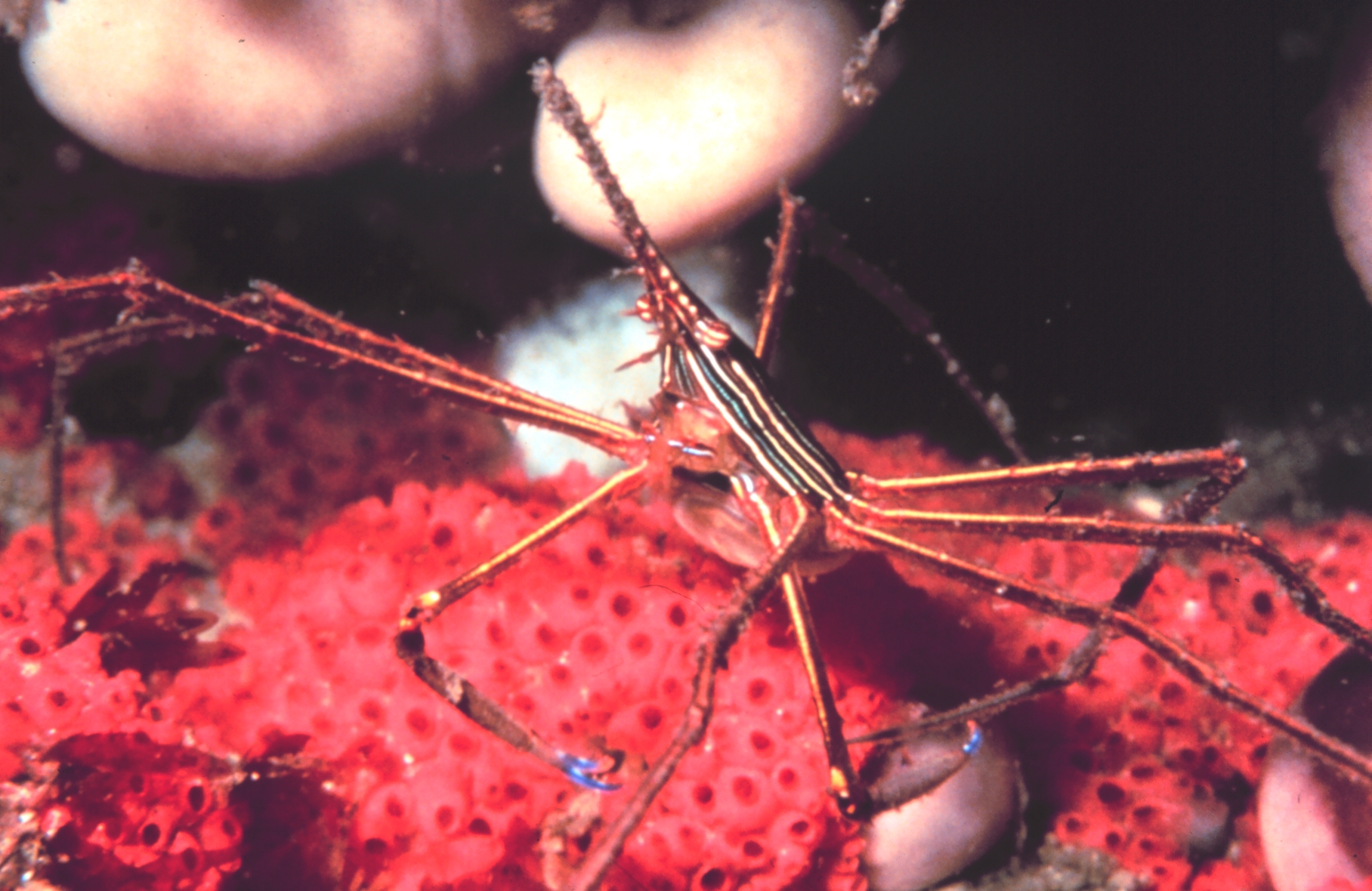- Yellowline arrow crab
Taxobox
name = Yellowline arrow crab

image_width = 230px
regnum =Animal ia
phylum =Arthropod a
subphylum = Crustacea
classis =Malacostraca
ordo =Decapoda
subordo =Pleocyemata
infraordo = Brachyura
familia =Majidae
genus = "Stenorhynchus "
species = "S. seticornis"
binomial = "Stenorhynchus seticornis"
binomial_authority = (Herbst, 1788)The yellowline arrow crab, "Stenorhynchus seticornis", is a saltwater
invertebrate that resembles a harvestman ("daddy long-legs") and may grow to a length of about 15 cm (6 in). It may be found in the wild on thetropic al andsubtropical Atlantic coasts ofthe Americas .Although notorious for becoming territorial in reef aquariums, yellowline arrow crabs can nonetheless be helpful when kept in an
aquarium , by eating bristle worms and other aquarium pests. They move surprisingly quickly for their ungainly appearance, and use their muscular legs to defend themselves againstpredator s.The crab's eight spiderlike walking legs may be three times as long as its body. The body is composed of many colors. It is golden-brown with white, brown or gold stripes running lengthwise. The ends of the legs are dark purple.
Yellowline arrow crabs are
nocturnal animals, which do all of their scavenging during the nighttime, and are rarely seen out during the daylight hours. These crabs do not fear divers who try to take photos of them, but can be quite territorial towards other animals.The Yellowline Arrow Crab can be found in coral reefs at depths of 10 and 50 feet in the Atlantic Ocean and Caribbean Sea. In North America they can be found in coral reefs on the coast of Texas and Florida. The Yellowline Arrow Crab is distinguishable by its long 8 spider-like legs. The violet tipped legs are 3 times as long as their body, much like the “daddy long legs” spider. These legs allow this arthropod to move quickly and even defend itself from predators. The Yellowline Arrow Crab can grow up to 15cm in length. This crab is a golden brown color with stripes on its dorsal side varying from white, brown, and gold. After molting its exoskeleton the crab grows back the calcium carbonate shell with sea water and by eating its old shell.During the day this crab hides under ledges, sea fans, and on sponges. However, at night these creatures start scavenging for food. The Yellowline Arrow Crab also can be predatory though. They can be seen feeding on small sea animals such as the feather duster worm or the bristle worm. Although the Yellowline Arrow Crab is territorial and unfriendly to other sea creatures, it is not threatened or startled by sea divers. This crab is so territorial in fact, that in aquariums, there can only be one crab per tank. These animals work better with other species rather than their own kind.When mating the male crab hold the female against his abdomen to place the sperm packet on her belly. The female then carries the eggs there until they are ready to hatch into Zoea (the larval stage of growth in the Yellowline Arrow Crab). Zoea are round, transparent, and tend to swim upwards towards the surface of the ocean. Zoea swims in open water and feed on plankton. Zoea grows through a series of molts, shedding its skin and growing new skin, similar to its adult form. Through these molts the crab eventually reaches a new stage of life called Megalops where the crab gets appendages. After a few more molts the crab will be completely developed into adult form. sorce-http://animaldiversity.ummz.umich.edu/site/accounts/information/Stenorhynchus_seticornis.html
References
*
Wikimedia Foundation. 2010.
